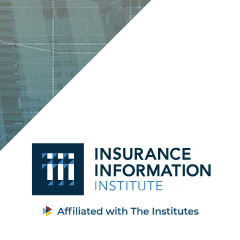
By Max Dorfman, Research Writer, Triple-I
As cyberattacks have increased in recent years, one area of particular concern has been those that target hospitals and health systems. These attacks have affected not only private information but also threatened the lives and well-being of patients.
A major shift
Hospitals rely more than ever on computerized systems to manage their information and systems. With the added complications related to the COVID-19 pandemic, the dangers associated with cyberattacks have only worsened.
“It’s part of a trend we’ve seen building over the last couple years, even before the pandemic,” said Scott Shackelford, chairman of the IU Cybersecurity Risk Management Program. Unfortunately, health-care providers are very much in the crosshairs. Not only do they often have insurance and deep pockets, but doctors need access to patient information to perform procedures and provide required services.
Because of this vulnerability and urgency, Shackelford said, “They are more likely to pay up.”
“If you look at the surveys that have been done, about one-in-three health providers have been hit by ransomware attacks just since 2020, and there’s been a 45 percent uptick in that rate since last December,” Shackelford added.
One recent attack, on Johnson Memorial Health in Franklin, Indiana, disabled its computer system. Although the hospital said it could still manage its patient intake, the loss of computer capabilities slowed operations down dramatically.
“We’re used to sending lab orders via computer, sending prescriptions to pharmacies via computer, so we’re going back to a real reliance on paper again,” Johnson Memorial President and CEO David Dunkle said. “We’re using more human runners, people taking lab recs between the ER and the lab.”
Hospitals have been slow to respond
Although there have been major technological advancements in the medical field, not all health systems have provided robust IT teams or thorough safety protocols. One area of note is with new medical devices, which take years to earn FDA approval and can come with outmoded software and operating systems without the latest security mechanisms.
This has given hackers the ability to disable medical imaging devices like MRIs. They can then shut down or interfere with machines. A recent study by McAfeeEnterprise’s Advanced Threat Research Team uncovered that an IV pump created by German medical manufacturer B. Braun possessed a susceptibility that would allow hackers to change medicine doses remotely.
And while traditional phishing attacks require a user to open a corrupted file — a trend that is now on the decline — new attacks can use so-called Zero Click malware, which can infect a system merely through receiving a text or email.
Additionally, sensitive data that health systems possess gives hackers the opportunity to sell this information online — or threaten to — with demands rising into the millions of dollars. After a 2009 U.S. law was passed that required Medicare and Medicaid providers to implement electronic health records, these risks have only accelerated.
Life and death circumstances
Hospitals are now not only seeing the financial risks with cyberattacks, but the threat to their patients’ lives.
In July 2019, Springhill Medical Center faced a massive ransomware attack that disabled its electronic devices. This failure created dire circumstances for one infant, causing doctors to be unable to monitor the child’s condition during delivery. The infant died, and the hospital is being sued by the mother for malpractice—a charge Springhill denies.
Another attack in Düsseldorf, Germany in 2020 saw the death of a 78-year-old woman from an aortic aneurysm. What was supposed to be a routine pick-up turned into a nightmare, when the local hospital’s system was disabled by a ransomware attack, forcing the emergency department to turn away the woman and causing the ambulance to travel much farther. During this time, the patient’s condition worsened, and she eventually died.
How much worse can it get?
By the middle of August of 2021, 38 attacks on health-care providers or systems had interrupted care at approximately 963 U.S. locations. For all of 2020, only 560 sites were affected in 80 separate incidents, according to Brett Callow, a threat analyst at security firm Emsisoft.
With the vast amount of data and equipment at each of these health facilities—as well as the linked networks of many systems—the threat of cyberattacks in health care will only continue to grow unless more action is taken.









